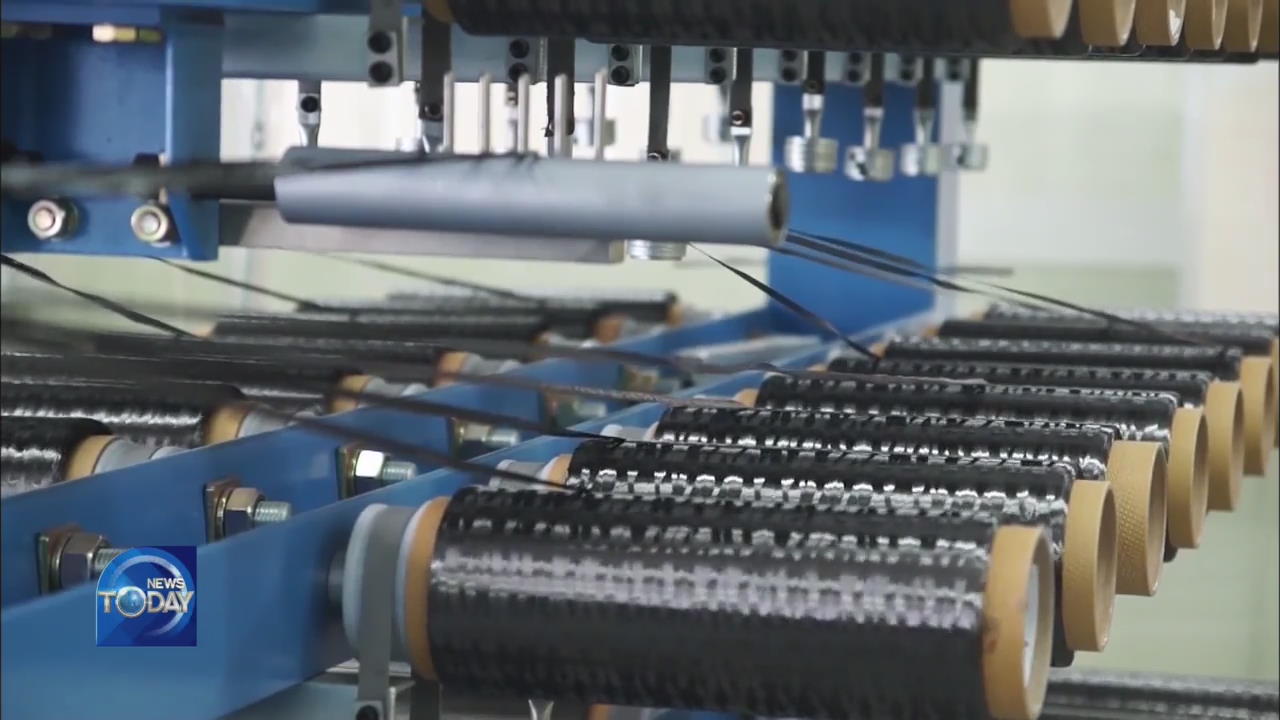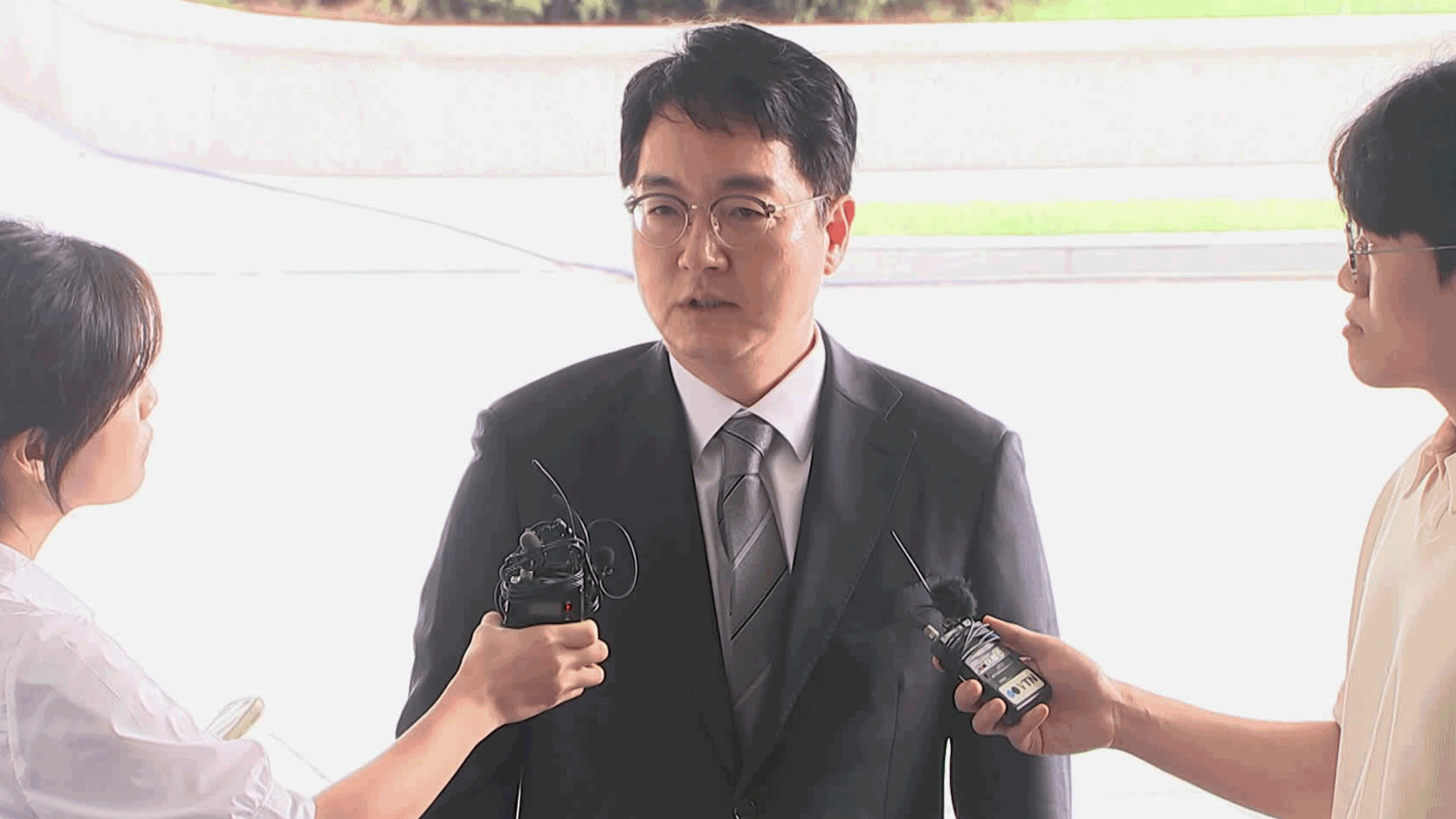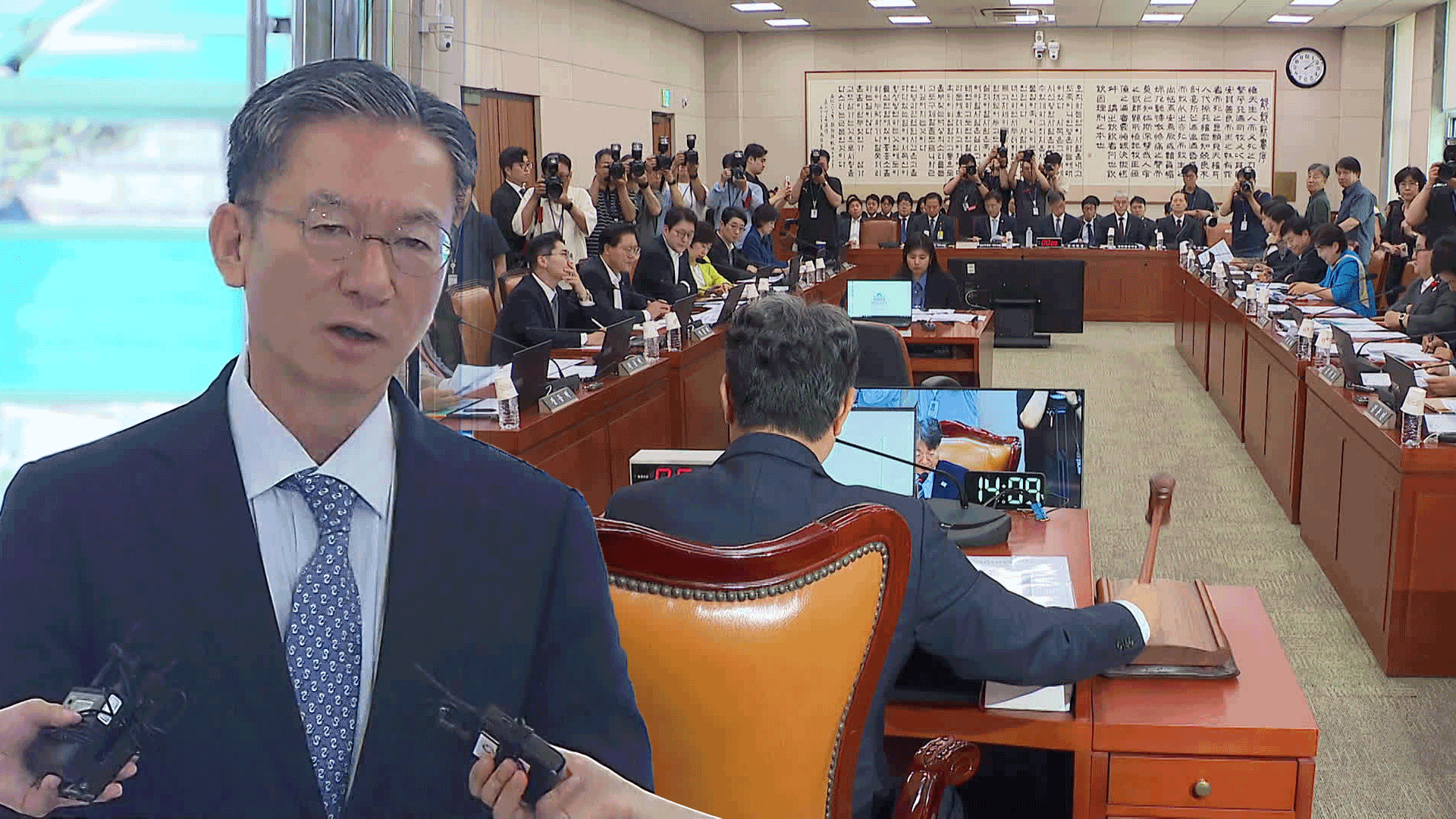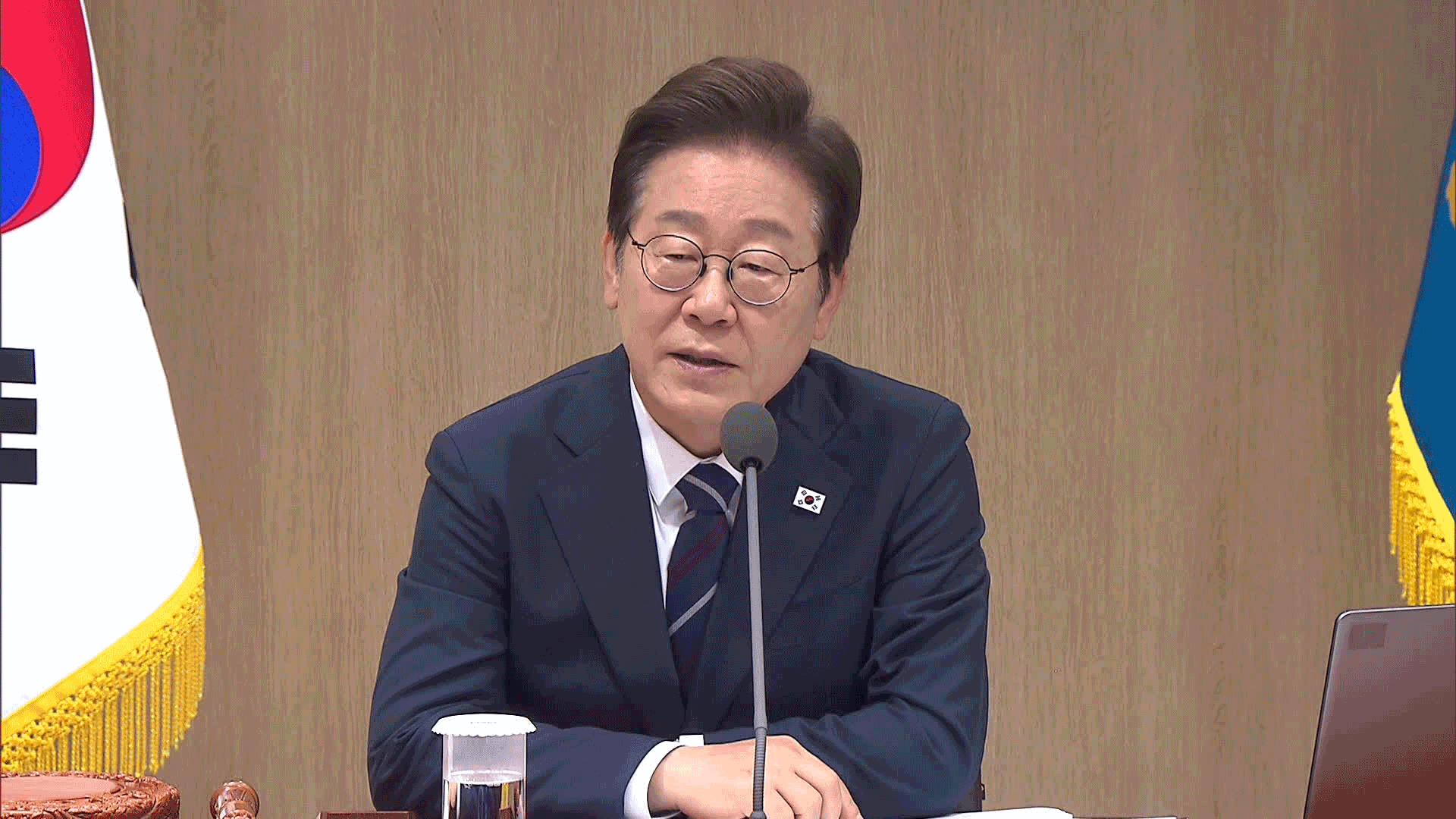LOCAL PRODUCTION OF MATERIALS
입력 2019.08.08 (15:02)
수정 2019.08.08 (17:08)
읽어주기 기능은 크롬기반의
브라우저에서만 사용하실 수 있습니다.
[Anchor Lead]
There are quite a few materials that are ready to be manufactured locally, instead of relying on Japanese imports. For instance, Hyundai Motor Company and Hyosung are in the last stage of testing their carbon fiber used in hydrogen-fueled vehicles.
[Pkg]
The South Korean government held a briefing immediately after Japan proclaimed the removal of the country from its whitelist. Companies at the briefing were particularly concerned about carbon fiber, which could have been hit with additional restrictions, like semiconductors. Carbon fiber is four times lighter than steel. Weight for weight, it is ten times stronger than steel. It's an essential material for hydrogen fuel tanks that keep the highly volatile hydrogen gas safe. South Korea has been relying on Japan for high-performance carbon fiber.
[Soundbite] KANG MAN-JIN(HANKUK CARBON) : "Three Japanese companies - Toray, Mitsubishi, and Teijin - account for over 65% of global carbon fiber production. So, we import most of the carbon fiber from those three companies."
But, in the wake of Japan's recent export controls, Korean companies have stepped up the project to replace the imported material with locally produced items. Hyosung started developing carbon fiber 13 years ago. Currently, carbon fiber from Japan is used in the fuel tanks of Hyundai hydrogen vehicles, but Hyosung and Hyundai Motor are working to develop local products to replace the imports. The two companies have been working on it for three years and now they are at the last stage of the safety test. The material must pass the shooting test. It should not shatter even when shot at using a gun.
[Soundbite] KIM CHEOL(HYOSUNG) : "Once we finish the hydrogen fuel tank test, we can determine if they will be ready by the year's end."
Once the material passes the test, the carbon fiber will be used in the fuel tank and undergo a year-long road test to see how it performs. If the Korean-made carbon fiber passes the remaining tests, fuel cell tanks in local hydrogen vehicles will no longer depend on imports from Japan.
There are quite a few materials that are ready to be manufactured locally, instead of relying on Japanese imports. For instance, Hyundai Motor Company and Hyosung are in the last stage of testing their carbon fiber used in hydrogen-fueled vehicles.
[Pkg]
The South Korean government held a briefing immediately after Japan proclaimed the removal of the country from its whitelist. Companies at the briefing were particularly concerned about carbon fiber, which could have been hit with additional restrictions, like semiconductors. Carbon fiber is four times lighter than steel. Weight for weight, it is ten times stronger than steel. It's an essential material for hydrogen fuel tanks that keep the highly volatile hydrogen gas safe. South Korea has been relying on Japan for high-performance carbon fiber.
[Soundbite] KANG MAN-JIN(HANKUK CARBON) : "Three Japanese companies - Toray, Mitsubishi, and Teijin - account for over 65% of global carbon fiber production. So, we import most of the carbon fiber from those three companies."
But, in the wake of Japan's recent export controls, Korean companies have stepped up the project to replace the imported material with locally produced items. Hyosung started developing carbon fiber 13 years ago. Currently, carbon fiber from Japan is used in the fuel tanks of Hyundai hydrogen vehicles, but Hyosung and Hyundai Motor are working to develop local products to replace the imports. The two companies have been working on it for three years and now they are at the last stage of the safety test. The material must pass the shooting test. It should not shatter even when shot at using a gun.
[Soundbite] KIM CHEOL(HYOSUNG) : "Once we finish the hydrogen fuel tank test, we can determine if they will be ready by the year's end."
Once the material passes the test, the carbon fiber will be used in the fuel tank and undergo a year-long road test to see how it performs. If the Korean-made carbon fiber passes the remaining tests, fuel cell tanks in local hydrogen vehicles will no longer depend on imports from Japan.
■ 제보하기
▷ 카카오톡 : 'KBS제보' 검색, 채널 추가
▷ 전화 : 02-781-1234, 4444
▷ 이메일 : kbs1234@kbs.co.kr
▷ 유튜브, 네이버, 카카오에서도 KBS뉴스를 구독해주세요!
- LOCAL PRODUCTION OF MATERIALS
-
- 입력 2019-08-08 15:05:45
- 수정2019-08-08 17:08:30

[Anchor Lead]
There are quite a few materials that are ready to be manufactured locally, instead of relying on Japanese imports. For instance, Hyundai Motor Company and Hyosung are in the last stage of testing their carbon fiber used in hydrogen-fueled vehicles.
[Pkg]
The South Korean government held a briefing immediately after Japan proclaimed the removal of the country from its whitelist. Companies at the briefing were particularly concerned about carbon fiber, which could have been hit with additional restrictions, like semiconductors. Carbon fiber is four times lighter than steel. Weight for weight, it is ten times stronger than steel. It's an essential material for hydrogen fuel tanks that keep the highly volatile hydrogen gas safe. South Korea has been relying on Japan for high-performance carbon fiber.
[Soundbite] KANG MAN-JIN(HANKUK CARBON) : "Three Japanese companies - Toray, Mitsubishi, and Teijin - account for over 65% of global carbon fiber production. So, we import most of the carbon fiber from those three companies."
But, in the wake of Japan's recent export controls, Korean companies have stepped up the project to replace the imported material with locally produced items. Hyosung started developing carbon fiber 13 years ago. Currently, carbon fiber from Japan is used in the fuel tanks of Hyundai hydrogen vehicles, but Hyosung and Hyundai Motor are working to develop local products to replace the imports. The two companies have been working on it for three years and now they are at the last stage of the safety test. The material must pass the shooting test. It should not shatter even when shot at using a gun.
[Soundbite] KIM CHEOL(HYOSUNG) : "Once we finish the hydrogen fuel tank test, we can determine if they will be ready by the year's end."
Once the material passes the test, the carbon fiber will be used in the fuel tank and undergo a year-long road test to see how it performs. If the Korean-made carbon fiber passes the remaining tests, fuel cell tanks in local hydrogen vehicles will no longer depend on imports from Japan.
There are quite a few materials that are ready to be manufactured locally, instead of relying on Japanese imports. For instance, Hyundai Motor Company and Hyosung are in the last stage of testing their carbon fiber used in hydrogen-fueled vehicles.
[Pkg]
The South Korean government held a briefing immediately after Japan proclaimed the removal of the country from its whitelist. Companies at the briefing were particularly concerned about carbon fiber, which could have been hit with additional restrictions, like semiconductors. Carbon fiber is four times lighter than steel. Weight for weight, it is ten times stronger than steel. It's an essential material for hydrogen fuel tanks that keep the highly volatile hydrogen gas safe. South Korea has been relying on Japan for high-performance carbon fiber.
[Soundbite] KANG MAN-JIN(HANKUK CARBON) : "Three Japanese companies - Toray, Mitsubishi, and Teijin - account for over 65% of global carbon fiber production. So, we import most of the carbon fiber from those three companies."
But, in the wake of Japan's recent export controls, Korean companies have stepped up the project to replace the imported material with locally produced items. Hyosung started developing carbon fiber 13 years ago. Currently, carbon fiber from Japan is used in the fuel tanks of Hyundai hydrogen vehicles, but Hyosung and Hyundai Motor are working to develop local products to replace the imports. The two companies have been working on it for three years and now they are at the last stage of the safety test. The material must pass the shooting test. It should not shatter even when shot at using a gun.
[Soundbite] KIM CHEOL(HYOSUNG) : "Once we finish the hydrogen fuel tank test, we can determine if they will be ready by the year's end."
Once the material passes the test, the carbon fiber will be used in the fuel tank and undergo a year-long road test to see how it performs. If the Korean-made carbon fiber passes the remaining tests, fuel cell tanks in local hydrogen vehicles will no longer depend on imports from Japan.
이 기사가 좋으셨다면
-
좋아요
0
-
응원해요
0
-
후속 원해요
0














![[단독] 골프연습장 아니라더니<br>…‘한남동 골프연습장’ 도면 입수](/data/news/2025/07/01/20250701_Uh8Jnu.png)


이 기사에 대한 의견을 남겨주세요.